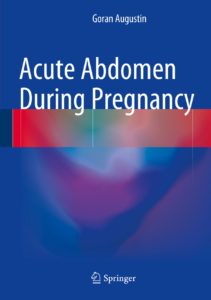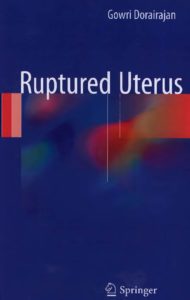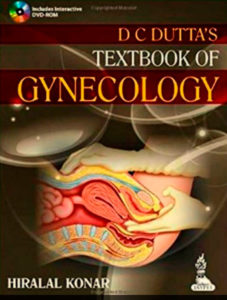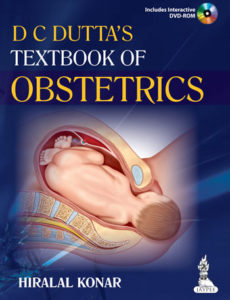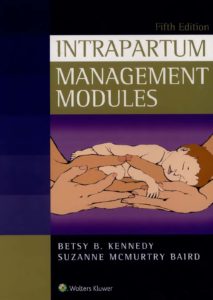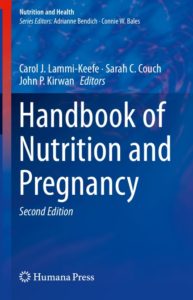Goran A. Acute Abdomen During Pregnancy
This book will help the reader to recognize, diagnose, and treat most of the acute abdominal disorders that may be encountered in the pregnant patient, whether associated with or incidental to the pregnancy. A wide range of conditions are addressed, including some which are very rare as well as those more frequently seen, such as acute appendicitis and acute cholecystitis. The principles underlying diagnosis and therapy are clearly explained. Particular features in the clinical presentation of pregnant patients are highlighted, and specific diagnostic and therapeutic algorithms and protocols, described. Attention is drawn to the diagnostic difficulties that may arise from atypical presentations and to restrictions on the use of certain diagnostic imaging studies. The book is designed to meet the needs of both the gynecologist and the general or abdominal surgeon, who together form the multidisciplinary team mandatory for effective treatment that will safeguard mother and baby.
Gowri Dorairajan Ruptured Uterus
The main focus of this book is on ruptured uterus which is a potentially fatal complication during pregnancy. The risk factors and clinical presentation of ruptured uterus vary widely. This book gives an insight into the various possible causes and their presentation. This book aims to sensitize the practicing obstetricians about the need for high level of caution in the deceptive scenarios. The readers would be able to translate the clinical experience and shelf knowledge into every day practice. The cases with similar risks and background will be compiled together under one chapter and at the end of each chapter key points will be highlighted.
Hiralal Konar Textbook of gynecology
This widely acclaimed Dutta’s Textbook of Gynecology has stepped into its sixth edition within a span of twenty three years. Since its predecessor, each area of gynecology has evolved substantially due to the concurrent progress in the field of molecular biology, technology and imaging. The amount of knowledge to acquire and skill to develop by the students, residents and clinicians are enormous. Retaining the basic objectives of Dutta, for his textbook, this edition has been revised extensively in the light of current wealth of information and for the need of our targeted readers. Each chapter of this book is authoritative. Consistency and uniformity with updated information in all the chapters is a special feature of this text. This edition has been made more user-friendly in terms of presentation of text matters, graphics, design and use of different color codes. Color code helps to highlight the core knowledge (must-know area) and also to present the high quality photographs, anatomical drawings, and imaging studies. The text has been enriched with tables, diagrams, boxes, charts, and algorithms which could be reproduced easily. Key points at the end of each chapter are for quick and easy revision.
Hiralal Konar Textbook of Obstetrics
This seventh edition of DC Dutta’s widely acclaimed comprehensive textbook of obstetrics has come up in a fully colored format. It is profusely illustrated with 407 full colored line drawings, photographs and sketches. The special attractions of this text like summary boxes, tables, algorithms are for easy understanding and reproducibility. The key points at the end of each chapter is for quick revision without referring to the text. The uniqueness of this text lies in its presentation style which is simple, clear and concise. The language throughout the text has been kept lucid and unambiguous. Medical advances upto the time of publication have been incorporated.
Hollingworth T. Differential diagnosis in obstetrics and gynaecology: An A-Z
One of the major challenges in obstetrics and gynaecology is the need for a broad knowledge of medicine and surgery as well as the conditions specific to reproduction. The comprehensive nature of Differential Diagnosis in Obstetrics and Gynaecology achieves this goal. The book provides clinicians with invaluable assistance in the diagnostic process to differentiate quickly and correctly among various diseases. From minor to major symptoms, the differential diagnoses are explored and offered in a way that is easy to read and leads to practical management. Arranged alphabetically, and based upon presenting symptoms, the text takes readers through a step-by-step approach to that presentation, culminating in a description of the different diagnoses that it might represent. The layout of the book is engaging as the text is interspersed with excellent illustrations and useful boxes highlighting important points. Algorithms, references, and websites have been included where appropriate and a glossary of common terms and terminology used in obstetrics and gynaecology has been provided at the end.
James D. K. High risk pregnancy. Management options.
Examines the full range of challenges in general obstetrics, medical complications of pregnancy, prenatal diagnosis and fetal disease, and management of labor and delivery. This book employs an evidence-based management approach throughout and explore a series of options to equip you to select the most appropriate treatment for each patient.
Källén B. Drugs during pregnancy
This book addresses methodological aspects of epidemiological studies on maternal drug use in pregnancy. Discussing the existing sources of error and how they can produce incorrect conclusions, it examines various epidemiological techniques and assesses their strengths and weaknesses. These refer both to the identification of outcomes (with special emphasis on congenital malformations) and to the types of exposure (drug use).
Kennedy B. B. Intrapartum management modules
This essential, fully updated edition offers easy-to-follow directions on the full range of intrapartum skills, from admission assessment of the laboring woman and fetus to delivery and postpartum care. Written by top-level intrapartum nurses and educators, this is not only an essential study aid for inpatient obstetric nursing certification; it also offers indispensable orientation support to new practitioners.
Khalbuss W. E. Gynecological and Breast Cytopathology Board Review and Self-Assessment
Gynecological and Breast Cytopathology Board Review and Self-Assessment is a comprehensive systems-based review of gynecological and breast cytology including cytomorphology, pitfalls and ancillary studies. Presented in a high-yield format with board-type multiple choice questions and detailed answers, this review includes chapters covering Pap smear cytology, colposcopy, breast FNA, and Pelvic washings. The book is also enriched with features to maximize studying and reviewing of cytopathology, including high-yield review with tables emphasizing key points, board exam-type questions, and high quality full-color images. Written by cytologists and cytopathologists with experience in the practice of modern cytology, as well as intensive teaching experience at national and international levels. Gynecological and Breast Cytopathology Board Review and Self-Assessment provides an excellent review, resource, and self-assessment for pathologists, cytopathologists, cytotechnologists, and trainees preparing for board examinations.
Lammi-Keefe C. J. Handbook of nutrition and pregnancy
This easy to use text provides practitioners and researchers with a global view of current and emerging issues concerned with successful pregnancy outcomes and approaches that have been successful or show promise in ensuring a successful pregnancy. The fully updated and revised second edition expands its scope with topics not covered in the first edition including pregnancy and military service; sleep disorders during pregnancy; the gut microbiome during pregnancy and the newborn; requirement for vitamin D in pregnancy; the environment ― contaminants and pregnancy; preeclampsia and new approaches to treatment; health disparities for whites, blacks, and teen pregnancies; depression in pregnancy―role of yoga; safe food handling for successful pregnancy outcome; relationship of epigenetics and diet in pregnancy; caffeine during pregnancy; polycystic ovary syndrome; US Hispanics and preterm births; celiac disease and pregnancy; cannabis use during pregnancy. The second edition of Handbook of Nutrition and Pregnancy will be a valuable resource for clinicians and other healthcare professionals who treat and counsel women of child-bearing age and pregnant women.

